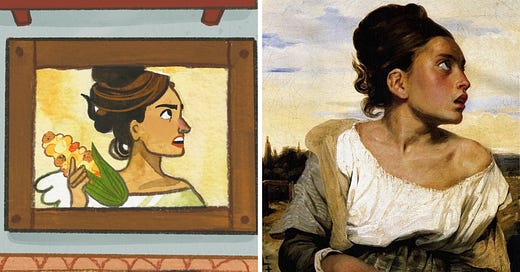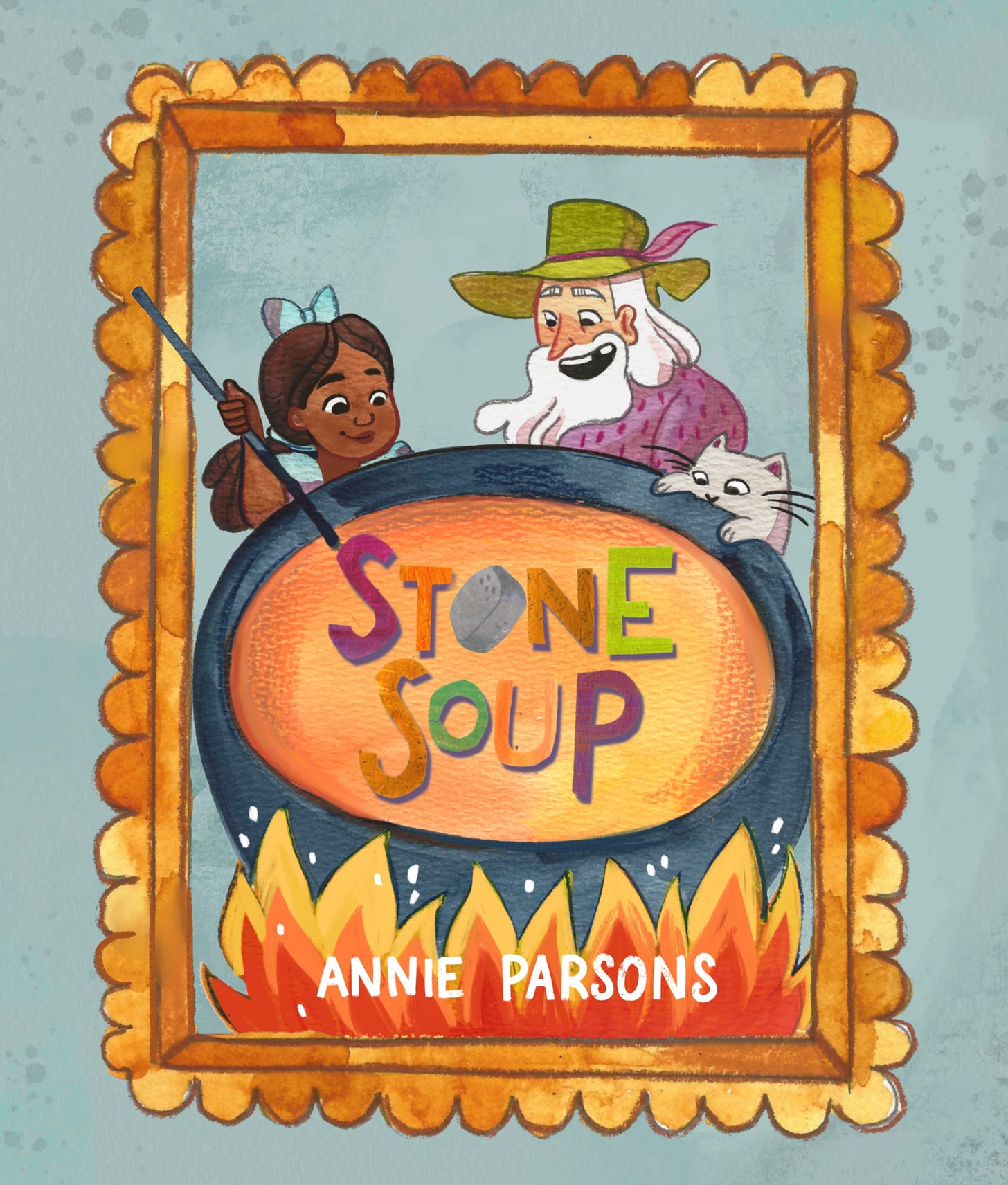This past summer, I wrote about how I struggled to find a unified look for the world and characters of my picture book Stone Soup, and how art history had finally helped me find that look. I even made it into a little challenge at the end of the book (it's also a printable activity on my website): match the characters in Stone Soup to the famous paintings that inspired them. I'd like to take you on a tour through these paintings that kept me company through long months of sketching, developing, and editing, and show you the visual world behind Stone Soup.
With a few exceptions (we'll talk about them later), Stone Soup is based on the Realism art movement (from roughly the 1840s-1880s), which is not exactly a light and fluffy period to inspire a children's picture book. Here's how I've explained Realism to kids: there used to be this idea that art should be about important people like generals and gods. Then the Realists came along, and they started painting normal people dealing with normal problems: people taking care of their livestock, people doing manual labor, people in poverty. Those people, said the Realists, were interesting, too. This focus on normal people, normal problems seemed to me to fit with the tone of Stone Soup, a story about hunger, with no talking animals or magic fixes. I also loved the idea of taking the characters from these famously harsh paintings and giving them a happier ending in my story.
Tomato Man (The Gleaners, 1854, by Jules Breton)
There's a more famous Realist painting by Jean-François Millet that's also called The Gleaners (we'll talk about a different Millet painting next time), but I chose the Jules Breton piece because I love this character and his funky hat. He seems to be some sort of official who is supervising the gleaning, and he doesn't look like a particularly pleasant person. I liked the idea that the story of Stone Soup would soften this grumpy guy towards his neighbors.
Corn Girl (Orphan Girl at the Cemetery, 1823-4, by Eugène Delacroix)
Okay, so this one is technically a Romantic painting since it's about 20 years earlier than the Realist movement. But I think we can see hints of Realism in the color palette and the subject matter of a girl grieving for her lost parents. The desolate landscape in the back also helped inspire the opening scenery in Stone Soup. I imagined that the terrible harvest must have been caused by some kind of bad weather or disaster, and the yellowish gray grass shows us that something is wrong with the land. Don't worry, it's green again by the end of the book.
Broccoli Man (The Stone Breakers, 1849, by Gustave Courbet)
This is perhaps THE Realist painting by THE Realist painter, Gustave Courbet, so I had to pay tribute to it with a side of cruciferous vegetables. Sadly, this painting was destroyed by the Allied bombing of Dresden during World War II, but I'm glad that we have surviving images of it. I loved imagining what this man looked like under his hat, since we can't quite see his face.
The Nervous Boy (Snap the Whip, 1872, by Winslow Homer)
I ended up referencing American realist Winslow Homer the most in Stone Soup- we'll talk about two more of his paintings next time, but Snap the Whip might be my favorite. "Crack the whip" or "snap the whip" is a loosely structured game where kids hold hands and run around following a leader until their momentum forces them to fall over. The Nervous Boy from Stone Soup probably wouldn't play "crack the whip" because it sounds really dangerous, but I did base his outfit on this painting.
The Little Girl (Rodgers and Hammerstein's Cinderella, 1997, Walt Disney Television)
This one is a bonus from more recent art history. When I first started imagining the world of Stone Soup, I thought about the fairy tales I had grown up on, and the 1997 Cinderella was indelible on my childhood mind. The color! The whimsy! I knew I had to have a mini-Brandy in this story, and as the style of the book changed, the little girl's design was my constant anchor. I loved writing and drawing her.
We have a few more characters and paintings to cover in my next email- Carrot Guy, the Tall Lady, Pepper Woman, Onion Girl... now that I think about it, I should probably give my characters names in my second book.











This is brilliant! Those characters all make me so happy - especially knowing that they’re living happier lives in your book. I highly anticipate the next installment!
Loved seeing and hearing about your characters! Thank you!